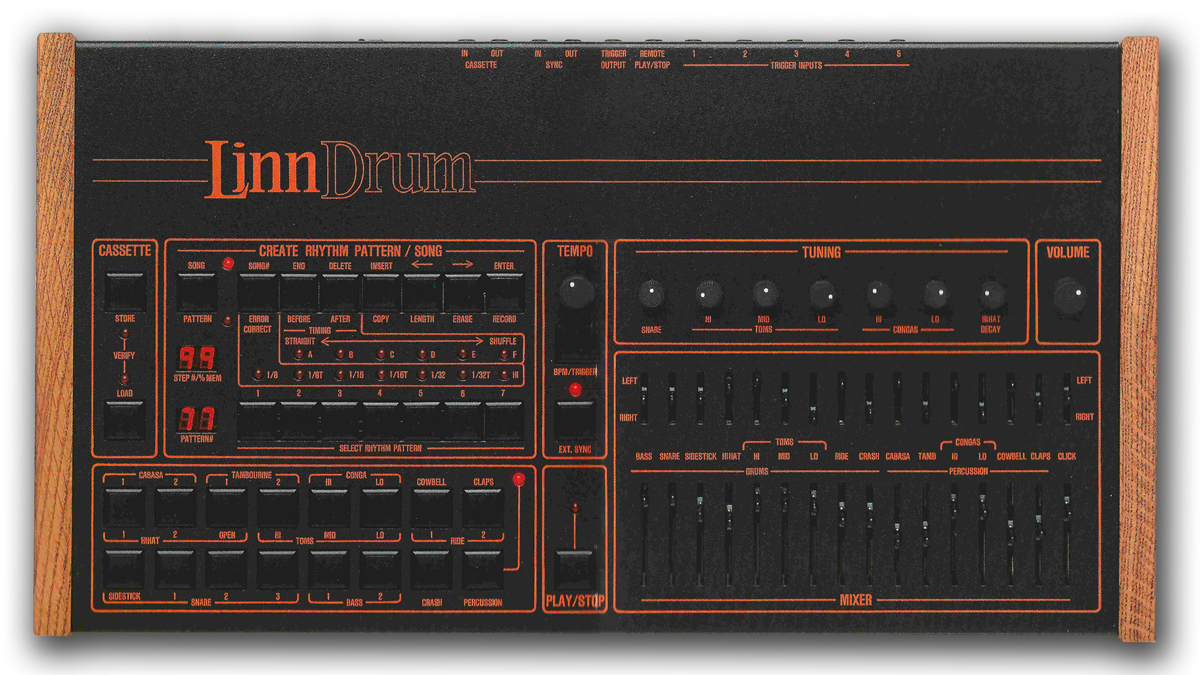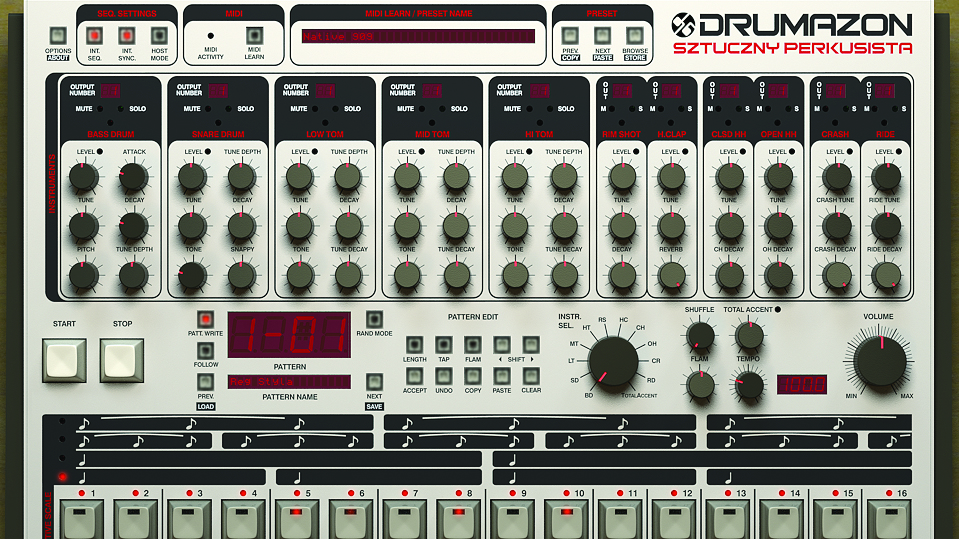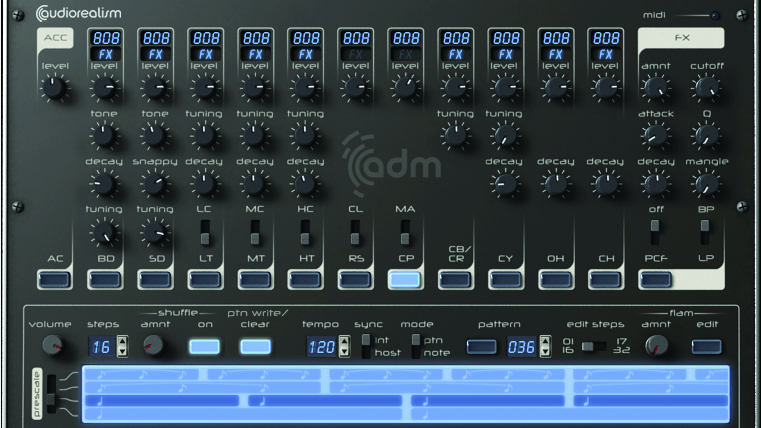Happy 909 day! Why we love Roland's classic drum machine (and the best VST plugin versions for your DAW)
Unappreciated upon release, Roland’s TR-909 drum machine reshaped a musical era and still sets standards for new generations

When it comes to legendary names among drum machines, Roland stands firmly at the top, having created a number of seminal beatboxes that have pounded their way into our collective consciousness over the years thanks to the innumerable hit tracks in which they’ve appeared.
From the delicate pitter-patter of the CR-78 that opens Phil Collins’ In the Air Tonight to the shutter-shaking TR-808 kick that rumbled through Afrika Bambaataa and the Soulsonic Force’s Planet Rock, these machines have shaped the soundtracks of the last four decades.
• Best drum machines 2020: our pick of the best grooveboxes
• TR-08 vs TR-09: Roland’s digital drum machines compared
And though the 808 is the one drum machine everyone can name-check, it was its follow-up that arguably shaped the musical direction of the 1990s and beyond. Along with another underrated Roland also-ran, the TB-303 BassLine, the tight ’n’ punchy sounds of the TR-909 would become the de facto sonic signature of house, acid house and techno styles - initially underground genres that eventually found their way into the mainstream.
While prices of the original 10,000 units inevitably escalated out of reach of the average muso, hardware and software developers alike would clone and copy its features, model its sounds, and otherwise exploit an entire generation’s desire to nail that sound. Of course, many would claim such a thing impossible, citing ageing and obsolescent components and that indescribable analogue mojo that seems to drive secondhand prices up.

Most of us don’t have a hardware TR-909 to play with, of course, but that doesn’t matter –today’s software makes it easier than ever to get those famous beats into your tracks for little to no cost. If you prefer to work with a self-contained instrument, most DAWs come bundled with at least one sampled 909 kit, and there are heaps of third-party virtual 909s out there. Alternatively, if you like to use drum samples, you’ll find plenty of one-shots and loops in commercial sample packs, and even more for free download online.
One thing to bear in mind is that every producer has access to the exact same palette of TR-909 sounds, making it tough to stand out from the crowd. However, once armed with an understanding of the original hardware’s operational quirks and limitations, you can emulate those nuances in your DAW for a completely authentic sound.
Want all the hottest music and gear news, reviews, deals, features and more, direct to your inbox? Sign up here.
Revolution 909
It seems impossible to imagine today, but the TR-909 was, in fact, a commercial failure. Coming in at exactly the wrong time at precisely the wrong price, the 909 fell flat, selling a meagre 10,000 units - far less than Roland had hoped when it was released in 1983.
The story was familiar - almost identical to that of the 909’s predecessor, the TR-808. That particular unit had - astonishingly - been pitched as a cost-effective competitor to Roger Linn’s LM-1, the first drum machine to use samples for each sound. Those samples had helped to make the LM-1 a runaway success, and created a demand for realistic drum machines.
The crisp, digital smack of the LM-1 made the 808 sound positively archaic. Further problems arose when improvements in semi-conductor manufacturing made critical transistors used in the 808 impossible to source.
Roland’s response? To replace it with a new model that used samples for hats and cymbals but analogue circuitry for everything else. Its punchy kick may have been seen as an improvement over the simple, booming bass of the TR-808, but fully sample-based units like the Linn and Oberheim DMX ruled the airwaves in 83. The 909’s smattering of sampled hats and cymbals seemed a lame compromise at the time, and worse - though it cost less than half the price of the DMX - it was pitched as a pro unit, and came in at a whopping £999.
That isn’t to say that the TR-909 was entirely behind the times. The addition of three five-pin DIN connectors around the back proved that. Indeed, this was the first Roland beatbox to include MIDI support, meaning it could communicate with any other likewise-outfitted gear that might be coming down the pike. Mind you, MIDI had yet to become the accepted standard it is today, so Roland hedged its bets by also including its usual DIN-Sync port, as well.
As ever, the grid-based programming was relatively easy to grok, and improvements to the Accent function provided some interesting dynamics to the proceedings. With an impressive 96 patterns and eight song slots at hand, there was enough memory to satiate even the most prolific producer.
And yet those sounds! As much as we love them today, in 83 they were nothing short of catastrophic. It’s hard to imagine the 909 competing with, say, Oberheim’s cut-down DX, which cost only slightly more, and offered user-swappable samples on optional EPROM chips.
Roland finally caught on, and a year after the 909 was released, it was gone, replaced by the sample-based TR-707.
It wouldn’t be long before sample-based drum machines were being priced for the gigging musician rather than the studio pro. Add to that the fact that sample-based keyboard ‘workstations’ would take the market by storm within a few years, and it’s easy to imagine that drum machines of any sort had seen their day.
But had they? Studio pros may have grown weary of premium-priced drum machines, but there were plenty of second-hand units to be found cheap. As happened with both the TR-808 and TB-303, pre-owned machines were snapped up by skint musicians desperate for gear and less concerned with the pop charts. Hip-hop and club producers had no trouble with the analogue sounds of the 909 and, in fact, recognised that the raw analogue power of the kick, snare, and clap could shake a warehouse to its rafters. Artists like Jeff Mills and Frankie Knuckles used secondhand TR-909s to create classic tracks that would be imitated by those that followed, creating a demand for the once-overlooked 909.
The rest is, as they say, history - and one that is too well-known to be retold here.
3 great virtual TR-909 clones

Roland TR-909 Software Rhythm Composer
Roland has never ceded to demands for an analogue recreation of its lauded analogue beatboxes, but it has seen fit to recreate them in various digital guises over the years. This particular incarnation comes as part of the company’s monthly Cloud subscription service.

d16 Group Drumazon
A constant resource for killer clones of classic kit, d16 Group has given us its take on quite a number of Roland classics, including the TR-808 (Nepheton), TR-606 (Nithonat), and this, a 909 knock-off. As ever, the sound is pretty much spot-on, and the interface will be familiar to users of the original. It's added in all mod cons, too, including its wicked randomiser.
Read d16 Group Drumazon review

Audiorealism Drum Machine (ADM)
Mike Janney’s essential virtual instrument features three classic Roland bangers in a single plugin. Yep, ADM includes models of the 606, 808, and 909, and you can intermix them as you see fit. With per-step control over parameters like filter cutoff and Q, it’s not limited to the beats of old. Plus, you can import SysEx from an actual TR-909. Don’t forget the free version, either!


Computer Music magazine is the world’s best selling publication dedicated solely to making great music with your Mac or PC computer. Each issue it brings its lucky readers the best in cutting-edge tutorials, need-to-know, expert software reviews and even all the tools you actually need to make great music today, courtesy of our legendary CM Plugin Suite.
